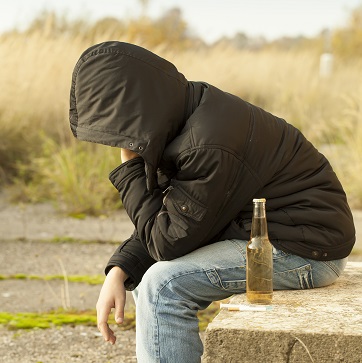08 Apr 2014
Chronic Heroin Use Is On The Rise
Heroin is perhaps the most widely known opioid narcotic drug of abuse. In addition to opioid addiction, chronic users of this drug typically face a range of serious and potentially fatal health problems. In a report presented in March 2014 to the White House Office of National Drug Control Policy, a team of researchers from the RAND Corporation estimated how many people in the U.S. qualified as chronic heroin users in the years between 2000 and 2010. This report includes detailed information on the levels of drug intake found among chronic users.
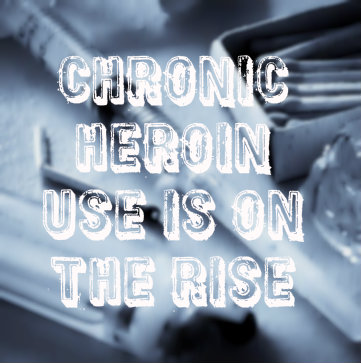 What Is Considered Chronic Use?
What Is Considered Chronic Use?
The federal Substance Abuse and Mental Health Services uses data from a yearly undertaking called the National Survey on Drug Use and Health to estimate how many Americans age 12 or older use heroin to any extent in the average month. The latest findings from this survey were released in the fall of 2013 and contain information compiled for most of 2012 and a short segment of 2011. According to these findings, roughly 335,000 adults and teenagers took heroin at least once in a representative 30-day timeframe. Altogether, about double that amount (669,000) took the drug at least once during the yearlong survey period. The figures for monthly heroin use were higher in 2012 than at any point since 2006. The figures for yearly use were higher in that year than for any year in the previous decade.
The Levels Of Chronic Heroin Use
Chronic drug use is a descriptive and useful but fairly imprecise term. Some chronic users may take a given drug four to 10 times a month, while others may have a more accelerated pattern of intake and take a drug 11 to 20 days per month. Still other chronic users may have heavily accelerated patterns of intake and take a given drug 21 days or more per month. As a rule, repeated use of an addictive substance is highly associated with chances for abusing that substance and developing the symptoms of drug addiction. For this reason, chronic users account for the vast majority of people directly affected by abuse- and addiction-related problems. Heroin is particularly noted for its potential to trigger abuse and addiction in repeated users. Users of the drug who develop these problems qualify for diagnosis of a condition officially known as opioid use disorder.
How Many Chronic Heroin Users Are There?
In the report presented to the White House Office of National Drug Control Policy, the RAND Corporation researchers calculated the number of chronic heroin users in the U.S. with information gathered from several highly regarded sources, including the federally sponsored National Survey on Drug Use and Health and Arrestee Drug Abuse Monitoring Program. This information covers the timeframe between the years 2000 and 2010. In 2010, the probable number of chronic heroin users hovered at about 1.5 million. Less likely numbers included a low estimate of 800,000 chronic users and a high estimate of 2.6 million chronic users. The number of chronic heroin users calculated by the RAND Corporation researchers is much higher than the total number of heroin users identified by the National Survey on Drug Use and Health. This is largely attributable to the researchers’ inclusion of information from the Arrestee Drug Abuse Monitoring Program, which covers a large pool of people (the arrested and the imprisoned) affected by an uncommonly high rate of substance use.
Roughly 300,000 of the individuals identified by the researchers as chronic heroin users took the drug four to 10 days per month. Another 200,000 identified individuals took the drug 11 to 20 days per month. Two-thirds (1 million) of those identified as chronic heroin users took the drug 21 days or more per month.
The authors of the report presented to the White House Office of National Drug Policy note that it’s fairly difficult to accurately estimate the number of people affected by chronic heroin use. This is due, in large part, to the problems involved in tracking the relatively small segment of the total population that takes the drug. On an important note, the data used by the report’s authors did not extend into 2011, 2012 and 2013. Figures from the National Survey on Drug Use point toward a sharp increase in overall heroin use during 2011 and 2012 (as of early 2014, figures for 2013 have not been released).
Find Out About Naloxone – A Potential Lifesaver For Heroin Addicts
04 Apr 2014
Cocaine Use Is On A Steady Decline
Cocaine is a well-known, illegal stimulant drug of abuse. While short-term use of this drug can lead to serious or even fatal health problems, much of the public health focus on cocaine centers on its ability to produce addiction in chronic users. In a report presented in March 2014 to the White House Office of National Drug Control Policy, researchers from the RAND Corporation made detailed estimates of the number of chronic cocaine users in the U.S. from 2000 to 2010. Unlike most previous efforts, which include only the overall total of chronic users, these estimates also specify levels of involvement in chronic cocaine use.
Who Is Using Cocaine?
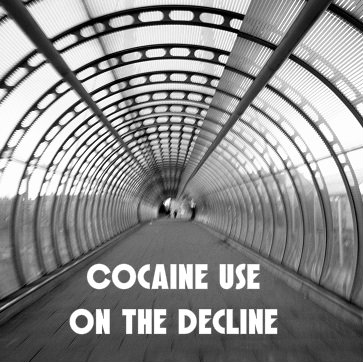 A federal agency called the Substance Abuse and Mental Health Services Administration uses a yearly project called the National Survey on Drug Use and Health to estimate the number of people in the U.S. who use any amount of cocaine in the average month. According to the most recent figures from this survey (reported in late 2013), roughly 1.6 million adults and teenagers used the drug in a representative month in 2012. This number represents about 0.6 percent of the entire U.S. population age 12 or older. Since 2002, the highest reported rate of monthly cocaine use is 1.0 percent; the rate reached this peak in three years: 2003, 2005 and 2006. Cocaine use has been trending pretty steadily downward since 2006, with a low monthly rate of 0.5 percent reported in 2011.
A federal agency called the Substance Abuse and Mental Health Services Administration uses a yearly project called the National Survey on Drug Use and Health to estimate the number of people in the U.S. who use any amount of cocaine in the average month. According to the most recent figures from this survey (reported in late 2013), roughly 1.6 million adults and teenagers used the drug in a representative month in 2012. This number represents about 0.6 percent of the entire U.S. population age 12 or older. Since 2002, the highest reported rate of monthly cocaine use is 1.0 percent; the rate reached this peak in three years: 2003, 2005 and 2006. Cocaine use has been trending pretty steadily downward since 2006, with a low monthly rate of 0.5 percent reported in 2011.
What Are The Levels Of Chronic Use?
Chronic drug users are users who consume any given substance repeatedly over time. However, not all chronic users consume drugs with the same level of frequency. On the low end, a chronic cocaine user may consume the drug from roughly four to 10 days in any 30-day time period. Moderate to heavily involved chronic users may consume the drug from 11 to 20 days within the same time period. The heaviest chronic users consume cocaine on at least 21 days within a given month. Any chronic user runs the risk of developing (or already having) diagnosable problems with cocaine abuse or cocaine addiction (both of which are classified as specific forms of a condition called stimulant use disorder). However, as a rule, heavy chronic users have the most seriously elevated risks. In addition, heavy chronic users account for a large percentage of the overall amount of cocaine consumed in any segment of the population.
How Many Chronic Cocaine Users Are There?
In the report presented to the White House Office of National Drug Control Policy, the RAND Corporation researchers used information gathered from the National Survey on Drug Use and Health, the federally sponsored Arrestee Drug Abuse Monitoring Program and several other sources to estimate the number of Americans involved in chronic cocaine use in the first decade of the 2000s. In all likelihood, the total number of chronic users in 2010 (the last year under consideration) was roughly 2.5 million. For the sake of accuracy, the report also includes a low potential figure of 1.6 million chronic users and a high potential figure of 3.9 million chronic users. Most of the chronic cocaine users (1.3 million) consumed the drug four to 10 days per month. Another 500,000 chronic users consumed the drug somewhere in the range of 11 to 20 days per month. In addition, 600,000 chronic users consumed cocaine at least 21 days per month.
Past And Present Cocaine Use
The highest reported number of likely chronic cocaine users between 2000 and 2010 was 3.3 million in the year 2000. Totals for the following six or seven years were fairly close to this peak. However, a downward trend in the number of chronic users began in 2006 and continued through the end of the period under consideration.
The estimate of cocaine use reported by the RAND Corporation is consistently higher than the estimate provided by the National Survey on Drug Use and Health. The difference between the two projects can be broadly attributed to the wider number of sources used by the RAND Corporation researchers, and more specifically attributed to the inclusion of data from the Arrestee Drug Abuse Monitoring Program (which gathered information from people who were incarcerated or otherwise involved in the criminal justice system). The RAND Corporation researchers note that total cocaine use (among both occasional and chronic users) fell by close to 50 percent between 2006 and 2010.
Find Out How An ADHD Medication Disrupts Cocaine Addiction
03 Apr 2014
Why Is Substance Abuse Rising Among Seniors?
Drug abuse is not only for the young. Statistics indicate that seniors are using and abusing drugs at an ever increasing rate. It’s a problem that not many are willing to talk about openly, but the risks to our older loved ones are great and it is an important issue to address. The biggest problems when it comes to substance abuse in the elderly are alcohol and prescription drugs. If you care for an older friend or family member, be aware of the possibility of substance abuse and know the signs so you can step in and help.
Why Are Seniors Abusing Drugs And Alcohol?
 There are several reasons older Americans are abusing substances in growing numbers. One explanation is that the population of seniors has been growing as the baby boomer generation ages. That population age shift, however, is not the only issue. Socializing often drops off with retirement and aging. With loneliness may come self-medication with alcohol or readily available prescription medications. Another possible issue is mental health. Many seniors either do not recognize the signs of mental health problems in themselves, or they are embarrassed to seek treatment and turn to self-medication instead of getting professional help.
There are several reasons older Americans are abusing substances in growing numbers. One explanation is that the population of seniors has been growing as the baby boomer generation ages. That population age shift, however, is not the only issue. Socializing often drops off with retirement and aging. With loneliness may come self-medication with alcohol or readily available prescription medications. Another possible issue is mental health. Many seniors either do not recognize the signs of mental health problems in themselves, or they are embarrassed to seek treatment and turn to self-medication instead of getting professional help.
What Are The Dangers Of Senior Substance Abuse?
Substance abuse is risky and dangerous for anyone at any age, but the elderly are particularly vulnerable to the consequences. Many seniors have several prescriptions for medical reasons. Mixing these drugs with each other and with alcohol can have serious and even fatal outcomes. Between 20 percent and 30 percent of adults over the age of 75 have a problem with drinking, which means that the possibility for harmful interactions is great.
Abusing drugs and alcohol, or both, causes dangerous side effects for seniors. These include sleeping problems, delirium and cognitive issues, difficulty balancing and an increased number of falls, and depression and anxiety.
How To Recognizing The Signs Of Substance Abuse
If you think it is impossible that your older loved one is abusing drugs, take a look at the facts. According to Johns Hopkins Medical School, 12 percent to 15 percent of older adults who seek medical help for any reason are abusing prescription drugs. While some also abuse illegal drugs, prescriptions are the real issue. As with people in other age groups, seniors may underestimate the harm that these legal drugs can cause. Opioid painkillers and benzodiazepines are among the most frequently abused. Make sure you know the signs of abuse so you can recognize them in your older loved one.
The most important thing to look for is change. Any kind of change in regular habits or behaviors may indicate a drug abuse problem, or a medical problem. In either case, your loved one will need to see a doctor. With drug abuse, you may see changes in sleeping habits and appetite. Look for unexplained weight loss or gain. An increased number of falls or injuries can indicate inebriation. Changes in mood, such as irritability, agitation or confusion often accompany drug abuse. Also be suspicious if your loved one is seeing multiple doctors or filling prescriptions in several different pharmacies.
Seniors substance abuse is a growing problem and one that could have serious individual and public health implications. The consequences of abusing drugs and alcohol become more serious as we age. Take good care of your older loved ones and always have your eyes open to the signs of abuse. Intervening is important and could prevent harm and even save a life.
Methamphetamine is a highly addictive stimulant drug of abuse that produces substantially more profound effects on normal brain chemistry than cocaine. Repeated, long-term (i.e., chronic) users of this drug have very strong chances of developing diagnosable issues with drug abuse and drug addiction. In March 2014, researchers from the RAND Corporation presented the White House Office of National Drug Control Policy with a detailed report that, among other things, estimates the number of Americans affected by chronic methamphetamine use from 2000 to 2010. This report also breaks down chronic users of the drug into three levels of habitual intake.
What Constitutes A Meth User?
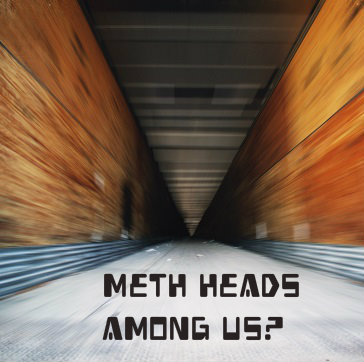 Each year, federal researchers from the Substance Abuse and Mental Health Services Administration use a project called the National Survey on Drug Use and Health to estimate the overall prevalence of methamphetamine use among American teenagers and adults. Figures released in late 2013 for the 2012 version of this survey indicate that 0.2 percent of the total population age 12 or older used the drug in an average or representative month. In raw numbers, this equates to about 440,000 people. In addition, approximately 0.4 percent of the teen and adult population used methamphetamine at some point during the entire survey year. This percentage equates to roughly 1.2 million people. Another project funded by the National Institute on Drug Abuse, called Monitoring the Future, tracks methamphetamine use among all 8th, 10th and 12th graders. All told, about 1 percent of students enrolled in these three grades used the drug at least one time in 2012.
Each year, federal researchers from the Substance Abuse and Mental Health Services Administration use a project called the National Survey on Drug Use and Health to estimate the overall prevalence of methamphetamine use among American teenagers and adults. Figures released in late 2013 for the 2012 version of this survey indicate that 0.2 percent of the total population age 12 or older used the drug in an average or representative month. In raw numbers, this equates to about 440,000 people. In addition, approximately 0.4 percent of the teen and adult population used methamphetamine at some point during the entire survey year. This percentage equates to roughly 1.2 million people. Another project funded by the National Institute on Drug Abuse, called Monitoring the Future, tracks methamphetamine use among all 8th, 10th and 12th graders. All told, about 1 percent of students enrolled in these three grades used the drug at least one time in 2012.
The Levels Of Chronic Meth Use
All chronic drug users repeatedly take a given substance over time. However, the actual frequency of intake between different chronic users can vary quite substantially. For instance, “low level” chronic users may regularly take a drug about four to 10 days a month. “Moderate- to high-level” chronic users may regularly take a drug about 11 to 20 days a month. The most extreme level of chronic use involves drug intake on a minimum of 21 days a month. Chronic drug use and the onset of diagnosable abuse and addiction typically go hand in hand. Compared to other habitual users, heavy chronic users commonly experience particularly intense forms of these problems. In the U.S., diagnosable cases of methamphetamine abuse and addiction fall under the heading of a larger condition called stimulant use disorder, which also encompasses abuse and addiction associated with the use of cocaine, amphetamine and other stimulant substances.
How Many Chronic Methamphetamine Users Are There?
In the report presented to the White House Office of National Drug Control Policy, the research team from the RAND Corporation used data gathered from several well-regarded sources to calculate how many people in the U.S. qualified as chronic methamphetamine users for each year between 2000 and 2010. Among others, these sources included that National Survey on Drug Use and Health and a periodically conducted project called the Arrestee Drug Abuse Monitoring Program, which tracked drug use rates in people who get arrested or otherwise come under the jurisdiction of the criminal justice system. In 2010, the most likely total number of chronic methamphetamine was about 1.6 million. The actual number of affected individuals may have been as low as 700,000 or as high as 2.7 million. For a number of reasons (including the relatively high rate of drug use among incarcerated individuals), the figures from the RAND report are substantially higher than the estimates produced by the National Survey on Drug Use and Health.
Roughly 600,000 of the people classified as chronic methamphetamine users in 2010 took the drug on four to 10 separate days per month. A slightly smaller number of chronic users (500,000) took the drug on 11 to 20 separate days per month. In addition, about 500,000 chronic methamphetamine users took the drug on 21 or more separate days per month.
The authors of the RAND Corporation report note that it’s quite difficult to accurately determine how many people in the U.S. have been involved in chronic methamphetamine use since the beginning of the 2000s. These difficulties stem largely from changes in the programs used to gather information on methamphetamine use. For example, methods employed by the National Survey on Drug Use and Health to calculate this use were changed significantly in 2007. In addition, there is only incomplete information available from the Arrestee Drug Abuse Monitoring Program (which also completely lost its federal funding in 2012).
Read About How Bath Salts Are 10 Times More Addictive Than Meth
Not all people get involved in substance abuse for the same reason. Broadly speaking, some people are motivated primarily by the desire to increase their experience of pleasure, while others are motivated primarily by the desire to escape or avoid painful experiences. According to the results of a study published in March 2014 in the journal Addictive Behaviors, the underlying reasons for marijuana use have a significant impact on the results of treatments designed to address cannabis addiction. It appears that addicts motivated by pain avoidance have a harder time maintaining their recovery than their peers motivated by pleasure-seeking.
What Is Cannabis Use Disorder?
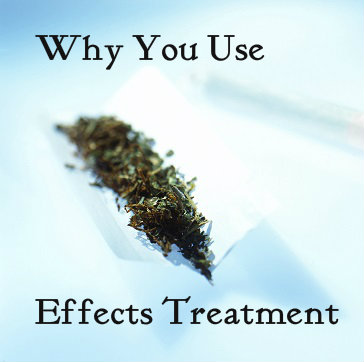 Marijuana or cannabis addiction is officially classified as part of a larger condition called cannabis use disorder. Some people affected by this disorder are not addicted to marijuana or other forms of cannabis, but still experience serious life impairment as a result of their drug use. Other affected individuals have undergone the long-term changes in brain chemistry that set the stage for marijuana/cannabis addiction and all other forms of substance addiction. Many people think that marijuana/cannabis addiction is a rare phenomenon. However, current evidence indicates that nine out of every 100 users of marijuana will develop symptoms that qualify them for an addiction diagnosis. Teenage marijuana users develop diagnosable addiction symptoms at close to twice this rate. In addition, addiction rates skyrocket among daily users of all ages; one-quarter to one-half of these individuals will eventually develop diagnosable symptoms.
Marijuana or cannabis addiction is officially classified as part of a larger condition called cannabis use disorder. Some people affected by this disorder are not addicted to marijuana or other forms of cannabis, but still experience serious life impairment as a result of their drug use. Other affected individuals have undergone the long-term changes in brain chemistry that set the stage for marijuana/cannabis addiction and all other forms of substance addiction. Many people think that marijuana/cannabis addiction is a rare phenomenon. However, current evidence indicates that nine out of every 100 users of marijuana will develop symptoms that qualify them for an addiction diagnosis. Teenage marijuana users develop diagnosable addiction symptoms at close to twice this rate. In addition, addiction rates skyrocket among daily users of all ages; one-quarter to one-half of these individuals will eventually develop diagnosable symptoms.
Emotional Motivations
Much of human behavior stems from the conscious or unconscious impact of various emotions and emotion-based motivations. Psychologists commonly refer to pleasure-seeking motivations as “positive” reasons for engaging in a behavior. Conversely, they commonly refer to pain-avoidance motivations as “negative” reasons. When it comes to substance intake, the terms “positive” and “negative” don’t mean that some people have “good” reasons for using drugs or alcohol while others have “bad” reasons. Instead, they simply mean that some people use drugs and alcohol because they believe that substance use will enhance their pleasurable experiences, while others use drugs or alcohol because they believe that substance use will help them avoid feeling bad or escape current bad feelings. Individuals with “positive” motivations for substance use can develop problems with abuse and/or addiction just like people with “negative” motivations. However, the two groups of substance users typically hold distinctly different mental/emotional points of view about themselves, their surroundings and their experiences.
Impact On Treatment Outcomes
In the study published in Addictive Behaviors, researchers from the University of Washington and Virginia Polytechnic Institute and State University looked at the treatment outcomes of marijuana addicts whose drug use stems from “negative” motivations. They conducted their work with information gathered from 87 adults who underwent treatment for issues related to a chemical reliance on marijuana. These participants provided information on the reasons they used marijuana in any given situation. In turn, for each participant, the researchers matched these motivations to three known markers of diminished mental well-being: lack of belief in the ability to control one’s behavior, use of ineffective coping strategies to deal with unpleasant emotions and an impairing state called psychological distress.
The researchers concluded that marijuana addicts who use the drug for “negative” reasons have increased chances of believing they can’t control their actions, using ineffective coping mechanisms to deal with their emotions and developing substantial amounts of psychological distress. The researchers also concluded that each of these adverse impacts develops independently of the others, which means that attempts to address one of the three issues will not reduce risks for the other two. In addition, the researchers found that, compared to marijuana addicts who don’t use the drug for “negative” reasons, marijuana addicts who do use the drug for these reasons have greater problems achieving or maintaining abstinence from marijuana intake after they complete their treatment programs.
The authors of the study published in Addictive Behaviors note that their new findings echo previous research efforts that indicate that “negative” reasons for drug or alcohol use produce more problems during recovery than “positive” reasons for drug or alcohol use. Current psychotherapeutic approaches for people affected by marijuana addiction typically focus on dealing with unpleasant or unwanted emotional states. The study’s authors believe that their work validates this approach and serves as an additional reason for continuing to focus on treating “negative” emotions in people who develop cannabis-related addiction issues.
Read About The Most Abused Substances To Self-Medicate Anxiety
21 Mar 2014
Is Your Loved One Abusing Pain Pills?
Prescription painkillers are serious drugs that are effective and help many people, but they are also risky. These medications are opioids, which means that they produce a euphoric feeling in the user, or a high, and they are addictive. If someone you love has been prescribed a narcotic painkiller, be aware of the dangers and the possibility of abuse. Know how to read the signs that he is abusing the pills and be prepared to intervene before it is too late.
What Are Opioid Painkillers?
Opioid painkillers are controlled substances used to treat severe and chronic pain. An opioid is any drug that is derived from the compounds found in the opium poppy. Heroin, the highly addictive street drug, is an opioid. Prescription opioid painkillers include oxycodone, hydrocodone, morphine and hydromorphone. They are sold under various brand names. These drugs block pain signals, but they also cause a pleasant feeling, and if abused, create changes in the brain that often lead to dependence.
What Are The Signs Of Opioid Abuse?
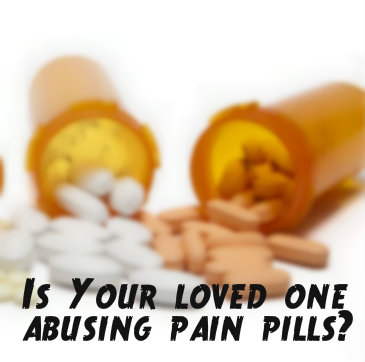 It is important to understand that there is a difference between abuse and addiction. Your loved one may be abusing painkillers if he is using them to get high or if he is taking more than he was directed by his doctor to take. Abuse is not addiction, but it can easily lead to that state. Being aware of the signs of abuse is important so that you can help him before he becomes addicted. If he is abusing his medications, chances are he will try to hide it from you. Here are some signs to watch for:
It is important to understand that there is a difference between abuse and addiction. Your loved one may be abusing painkillers if he is using them to get high or if he is taking more than he was directed by his doctor to take. Abuse is not addiction, but it can easily lead to that state. Being aware of the signs of abuse is important so that you can help him before he becomes addicted. If he is abusing his medications, chances are he will try to hide it from you. Here are some signs to watch for:
- Look for signs that your loved one is high on opioids. If he is taking them as directed he may experience a little bit of a high, but if he is abusing his pills the symptoms will be greater. Someone who is high on opioids will become drowsy and have slowed breathing and movements. He may also become anxious, have mood swings or become apathetic or depressed.
- Opioid abuse causes a lack of energy. If your loved one seems tired all the time, especially throughout the day, and skips out on activities he normally enjoys, he may be abusing his medications.
- Opioids also cause people to lose focus. Look for signs that your loved one’s attention span is changing. Maybe he can’t focus on his favorite television show. Maybe he is having problems at work because he loses focus and drifts.
- Look for physical signs. Opioids cause certain physical changes that you can watch for. Look for a lot of itching, flushing in the neck or face, extremely constricted pupils, a runny nose, a lot of yawning, nausea and vomiting and flu-like achiness.
- Watch for secretive behaviors. If your loved one is abusing his medications, he likely knows he is doing something wrong, and he will probably try to hide the behavior from you. Be aware of any behaviors that seem unusual or that indicate he may be hiding something from you.
- Be aware of mood swings or personality changes. Any kind of drug abuse can cause behavioral and personality changes. If he is acting strangely and you have no other explanation for his mood swings, drug abuse may be the culprit.
If your loved one has been prescribed opioids for pain, there is no reason to assume he will begin abusing them. However, many people have fallen into that trap without meaning to do so. Be aware of the signs of abuse and pay attention. You could be saving his life by intervening.
Read About Teens Abusing Painkillers
Homelessness is a socioeconomic condition that directly affects well over a million Americans in any given year. For a number of reasons, homeless people are significantly more likely than the rest of the population to develop serious problems with substance abuse or addiction. In a study published in September 2013 in the journal Addiction, researchers from the RAND Corporation examined the types of social connections that help define the ways in which homeless teenagers and young adults use or abuse drugs or alcohol.
Homelessness Statistics
No one really knows how many people in America are homeless at any particular point in time. However, according to recent figures compiled by the federal Substance Abuse and Mental Health Services Administration (SAMHSA), on a representative day in 2010, at least 400,000 individuals in the U.S. didn’t have a fixed home address and either lived on the streets or in some sort of shelter or temporary housing. In a 12-month period that overlapped parts of both 2009 and 2010, more than 1.5 million people qualified as homeless. Some homeless people only lack permanent housing for relatively short amounts of time; however, on a typical day, more than 100,000 Americans lack permanent housing on a long-term basis.
Who Makes Up For Most Of The Homelessness In America?
In the U.S., men and boys experience homelessness almost twice as often as girls and women. Almost 22 percent of all homeless Americans are children or teenagers below the age of 18. Young adults between the ages of 18 and 30 make up another 23.5 percent of the U.S. homeless population. However, adults between the ages of 31 and 50 have the highest overall rate of homelessness. In descending order, the three American ethnic groups most likely to experience homelessness are non-Hispanic whites, African-Americans and Hispanic whites.
Homelessness And Substance Abuse
Current estimates indicate that as many as 50 percent of all long-term homeless Americans are affected by serious problems with substance abuse or substance addiction. When rates for drug- or alcohol-related issues in time periods before or after homelessness are taken into account, this figure rises to more than 80 percent. In many cases, problems with substance abuse or addiction appear before homelessness occurs and contribute to the changing life circumstances that cause an affected individual to lose his or her attachments to a permanent home. However, in other cases, the difficulties of homelessness contribute to the onset of excessive, dysfunctional drug or alcohol consumption. Mental illness is also a frequent contributor to the declining life circumstances of homeless people.
Social Connections Important Regarding Drug Use
In the study published in Addiction, the RAND Corporation researchers sought to identify the people who are most likely to participate in drug or alcohol use with homeless teenagers and young adults. They conducted their work with the help of 419 homeless people between the ages of 13 and 24 from the greater Los Angeles area. Each of these individuals was asked to name 20 people whom they interacted with socially. In addition, the participants were asked to detail their 20 social contacts’ relevant background information and level of involvement with drug or alcohol use.
After examining their data, the researchers concluded that, in descending order, homeless youths are most likely to engage in alcohol use with their intimate sexual partners and people in their social circles who use drugs, engage in dangerous sexual practices, act as opinion formers, provide some sort of physical or emotional support, and have popular social standing. They also concluded that, in descending order, homeless youths are most likely to engage in drug use with their intimate sexual partners and people in their social circles who drink alcohol, engage in dangerous sexual practices, act as opinion formers, provide physical or emotional support, and have popular social standing.
The Significance Of Homelessness And Substance Abuse
Based on their findings, the authors of the study concluded that homeless teenagers and young adults tend to share drug and alcohol use with peers who have more than one clear risk for substantial problems with health or well-being, as well as with peers who in some way dominate or determine the ways in which they view and interact with the world. The authors believe that public health officials and abuse/addiction specialists can use this information as the basis for improved efforts to reach homeless youths affected by substance use/abuse and reduce their chances of developing or continuing dangerous patterns of drug or alcohol intake.
Read About How Volunteering Can Aid Your Own Recovery
Denial is a classic hallmark of addiction. Addicts cause themselves harm, they damage relationships with people they love, they get into legal trouble and financial trouble as well, and yet many will claim not to have a problem with drugs or alcohol. This is called denial, and while it is not a part of every addict’s arsenal, it is a very common defense mechanism. Until the veil of this denial can be lifted, an addict is unlikely to get help. By recognizing the signs of denial you can learn to help your loved one come to the realization that he needs help.
Is It Denial Or An Outright Lie?
 Lying is a conscious act meant to deceive. Your loved one may lie to you all the time. Lying is another defense mechanism used by addicts. To hide just how bad the problem is, he may lie to you about any number of things. To be in denial, however, is different. If your loved one is in denial, he truly believes that he doesn’t have a problem. It is frustrating to deal with an addict in denial, but realize that he is not trying to hurt you. He simply can’t see the extent of his problem.
Lying is a conscious act meant to deceive. Your loved one may lie to you all the time. Lying is another defense mechanism used by addicts. To hide just how bad the problem is, he may lie to you about any number of things. To be in denial, however, is different. If your loved one is in denial, he truly believes that he doesn’t have a problem. It is frustrating to deal with an addict in denial, but realize that he is not trying to hurt you. He simply can’t see the extent of his problem.
What Is Denial?
There are several different forms that denial can take. If you are dealing with someone who is in complete denial about his problem, he is totally oblivious to the harm that his drinking or drug use is causing. You may also be dealing with a case of partial denial. Addicts who only partially believe they have a problem may recognize that their drug use or drinking is a bad habit, but may deny the issues it is causing. Perhaps the most harmful type of denial occurs when the addict fully admits to having a problem, but denies needing any alcohol abuse help.
How Can You Recognize Denial?
Addicts are very good at behaving as if everything is fine. They strive to hide the damage that their addictions cause and present a normal face to the world. If you think your loved one is in deeper than he is letting on, look for signs that he is in denial of the severity of his problem. For instance, addicts in denial do a lot of rationalizing. He makes excuses for why he drinks or uses drugs. Maybe he says that he needs to drink after work to decompress.
Those in denial also tend to minimize their problems. Without even realizing that he is being untruthful, your loved one may tell you he had just two drinks at the bar, when he really had five. Avoidance is another denial strategy. Addicts sometimes withdraw from and avoid loved ones so they don’t have to have conversations about their behaviors. Also look out for blaming and bargaining. If your loved one blames external forces, even you, for his problem, he is in denial. He may bargain with you to let him have a few drinks if he promises not to drink the next day.
Addicts are good at denial. They deny their problem to others and to themselves. They get so good at it that denial becomes another unhealthy habit and a roadblock to getting help. If you think your loved one needs help, avoid falling into the trap of believing his denials. Trust your instincts and do your best to help him see what you see. If you fail to convince him, bring in other people who care about him and consider hosting an intervention. Addiction is a serious disease, you need to break through denial in order to get treatment and find success in recovery.
Read More About How You Can Help Someone With An Addiction


